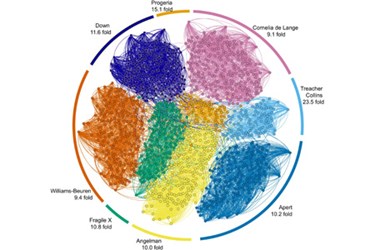Facial Recognition Software Could Diagnose Genetic Disorders
By Joel Lindsey

Researchers at the University of Oxford have developed a software program that uses photographs to diagnose possible genetic disorders.
“A diagnosis of a rare genetic disorder can be a very important step. It can provide parents with some certainty and help with genetic counseling on risks for other children or how likely a condition is to be passed on,” said Christoffer Nellåker, a researcher in the Medical Research Council’s Functional Genomics Unit at Oxford who is involved with the project, in a press release published recently on the university’s website. “A diagnosis can also improve estimates of how the disease might progress, or show which symptoms are caused by the genetic disorder and which are caused by other clinical issues that can be treated.”
Drawing on concepts used in other photo software applications such as Google, Picasa, and iPhoto, researchers involved with the project developed a program that recognizes faces in ordinary photographs. Designed to account for differences in lighting, image quality, and background, the software identifies primarily noses, mouths, eyes, and other important facial features. The program then compares these features to other photographs already entered into the database in order to begin identifying similarities and differences.
The key to the new software is the specialized algorithm that allows the program to search for and identify certain facial structures associated with genetic conditions such as Down’s syndrome, Angelman syndrome, or Progeria, according to the press release.
By clustering together all photographs that indicate such features, the computer program can compare a person’s facial structure with those already in the system and then suggest the disorders — ranked by likelihood — that those individuals are most likely to have.
“A doctor should in the future, anywhere in the world, be able to take a smartphone picture of a patient and run the computer analysis to quickly find out which genetic disorder the person might have,” said Nellåker. “This objective approach could help narrow the possible diagnoses, make comparisons easier, and allow doctors to come to a conclusion with more certainty.”
Researchers say that the program could become more accurate over time, as more photographic data is entered into its databases and as it analyzes larger numbers of faces.
Details regarding the software, along with results from early tests, have been published in the journal eLife.
Image Credit: eLife
